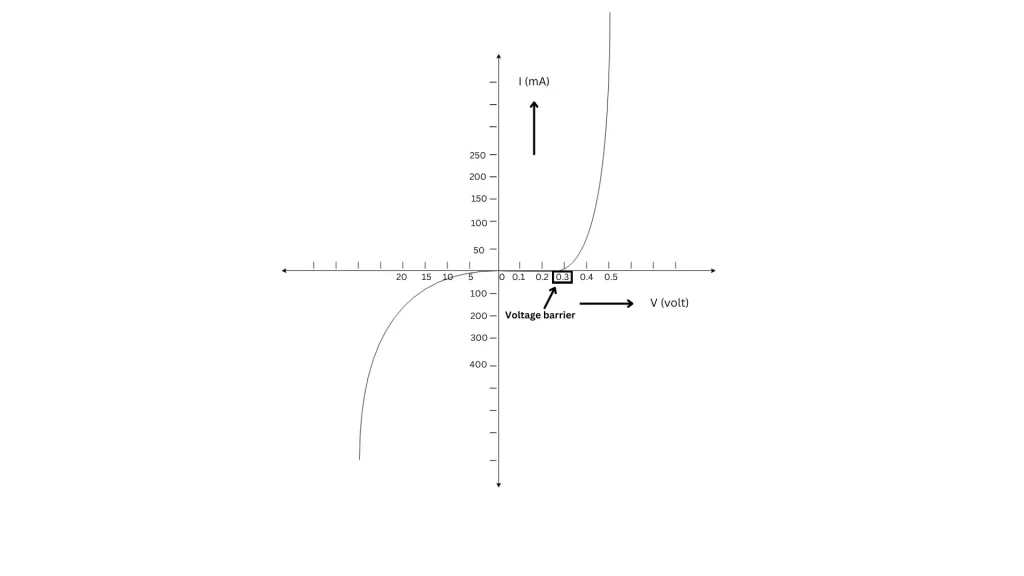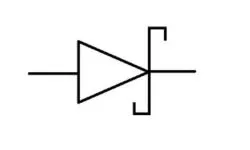This tutorial aims to provide a comprehensive understanding of the basic principles, workings, and types of the Diode. So, let’s dive in!
What is a Diode?
A semiconductor diode is an electronic component that allows current to flow in one direction while resisting current from another direction. It is also called a rectifier because it converts AC to DC. It is made by joining one P-type semiconductor and one N-type semiconductor. The diode plays a significant role in this modern electronic era. The arrow in the diode symbol indicates the direction of the current.

How does a diode work?
A diode is constructed with a P-type semiconductor that has a majority charge carrier of hole and an N-type semiconductor that has a majority charge carrier of electron. Where these two types of semiconductors get touched is called a junction.
In the junction, there are lack of free charge carriers because all the holes and the electrons in that area will combine. The area will be left only with uncovered positive and negative ions. For this reason, the area is called the depletion layer.
Thereby diode has two terminals, an anode and a cathode. There are two different ways to use a diode in a circuit depending on the applied voltage and they are:
- Forward bias
- Reverse bias

Forward Bias Diode
If positive voltage is applied in the anode and negative voltage in the cathode of the diode electrons flow from the n-type to the p-type semiconductor therefore the depletion layer gets banished and current starts flowing.
Reverse Bias Diode
If a positive voltage is given to the cathode and a negative voltage to the anode, the depletion layer expands because electrons and holes are drawn to the positive and negative potentials of the applied voltage, respectively. As a result, more positive and negative ions occur in the junction region. As it turns out, no current can travel through the diode.
Characteristics of Diode
Characteristics of the diode are understood by I-V graph. From the graph, we can see the diode that is in forward bias does not flow any current under a certain minimum voltage. This minimum voltage is called Threshold voltage or voltage barrier. For silicon diode, this voltage is 0.7 and for germanium, this voltage is 0.3. After crossing this minimum voltage the current increases exponentially. On the other hand, in reverse bias, current does not increase as voltage is increased. Only a small amount of current flow through it is called saturation current. This current is neglected in a circuit. If the voltage is increased further at one point the current increases rapidly. At this point, the diode simply gets spoiled and the value for the voltage when this phenomena occur is called breakdown voltage.

Types of Diodes
There are different types of diodes available for various purposes. The basic idea of some of them is given below:
P-N Junction Diode
p-n junction diodes are the basic type of diode that is used in almost every electrical circuit. They are constructed by joining a p-type and an n-type semiconductor. One important use of them is the rectification of AC (Alternating current). Mobile phone charging adapters and other types of devices that convert AC to DC use this type of diode.

Zener Diode
Zener diode can flow current through it with both forward and reverse bias. In forward bias, it acts like a normal diode but in reverse bias, it flows current, unlike a normal diode. In reverse bias To flow current through it, a specific voltage value should be exceeded. This specific Voltage is called Zener voltage. Zener diodes also regulate voltage. Voltage remains constant across it.

Light-emitting diode (LED)
Light-emitting diode (LED) converts electrical energy to light. LED only works in forward bias and does not work in reverse bias. The color of light depends on the doping of the semiconductor.

Schottky Diode
Schottky diode is made of a metal-semiconductor junction. Usually, a metal and an n-type semiconductor are joined together to form this type of diode. They have a lower forward voltage than normal p-n junction diodes and have fast switching speeds.

Recap
- A diode is a semiconductor device that allows current in one direction (forward bias) while blocking it in the opposite direction (reverse bias).
- It is formed by connecting P- and N-type semiconductors at a junction.
- Current flows in forward bias when a positive voltage is applied to the anode and a negative voltage to the cathode.
- In reverse bias, the depletion layer expands and prevents current flow.
- The I-V graph illustrates the characteristics of the diode based on the applied voltage.
